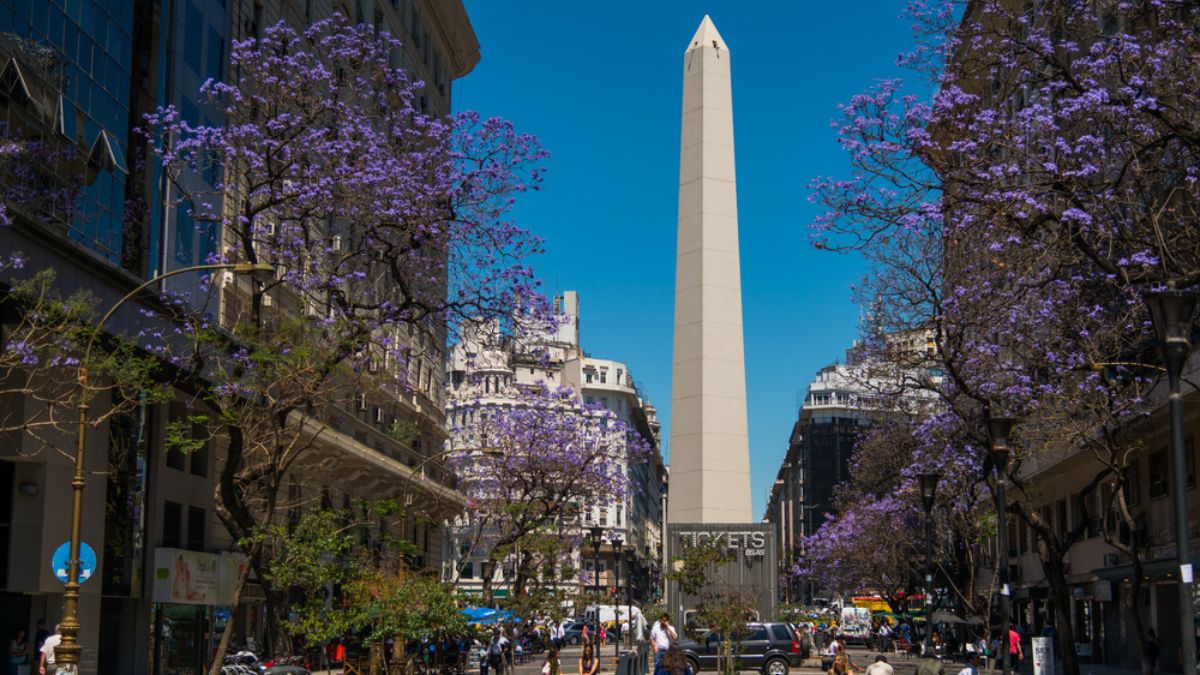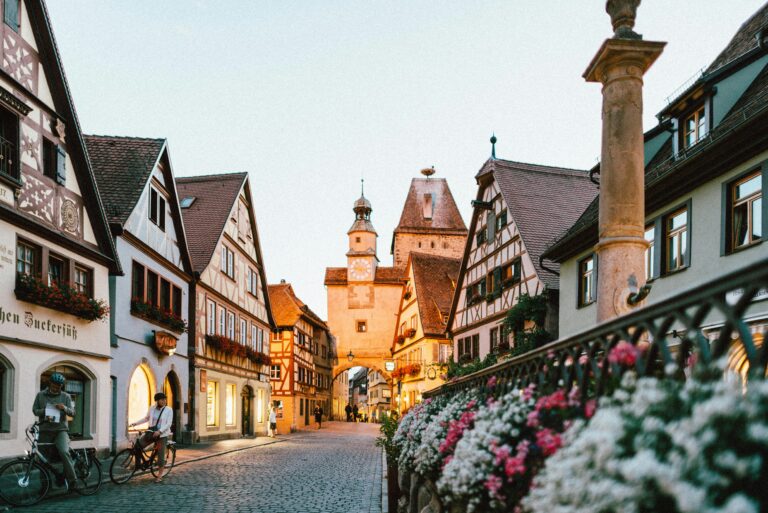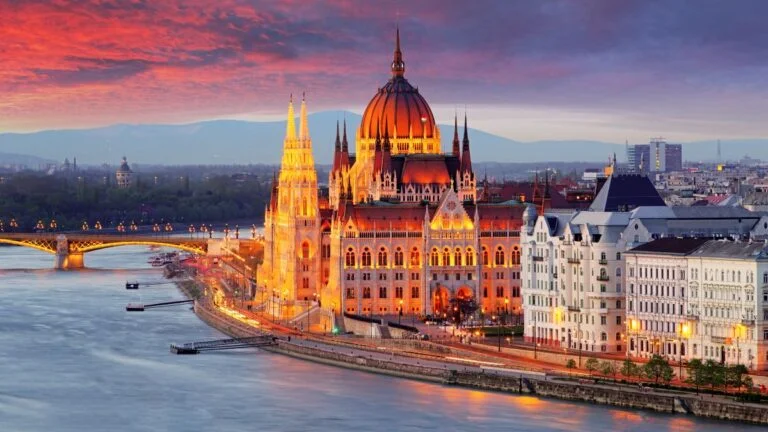50 Facts About Argentina You Need to Know Before Traveling There

As participants in Amazon Associates and other programs, we earn from qualifying purchases. This comes at no additional cost to you. For more details, see our Affiliate Disclosure.
Ready to dive into the heart of Argentina? Whether you’re packing your bags or just dreaming from your couch, knowing a bit about this vibrant country can make your experience or daydreams a whole lot richer. So, let’s get started with some cool facts that’ll give you a taste of what Argentina is all about.
Tango: The Dance of Argentina
Tango isn’t just a dance in Argentina; it’s a way of life. Born in the bustling streets of Buenos Aires in the late 19th century, tango reflects the country’s diverse culture. It’s more than just movements; it’s a story told through passion and rhythm.
Mate: Argentina’s Beloved Drink
Mate is more than just a drink in Argentina; it’s a social ritual. Shared among friends and family, this tea-like beverage is steeped in tradition and community. It’s not just about the caffeine; it’s about the connection.
The Land of Silver
The name ‘Argentina’ comes from the Latin word for silver, ‘argentum’. Early European explorers believed the country was full of the precious metal. While they didn’t find the silver they expected, the name stuck.
Gauchos: The Cowboys of the Pampas
Gauchos are the iconic cowboys of Argentina’s vast Pampas. Their skills in horse riding and cattle herding are legendary. These figures embody the spirit of freedom and the bond with nature.
Patagonia: A Natural Wonder
Patagonia, in the southern part of Argentina, is a land of breathtaking landscapes. From glaciers to mountain ranges, it’s a paradise for nature lovers and adventurers alike.
Argentine Beef: A Culinary Staple
Argentine beef is world-renowned for its quality and flavor. The country’s grass-fed cattle produce some of the best steaks you’ll ever taste. A visit to Argentina isn’t complete without a traditional asado, or barbecue.
The Widest Avenue in the World
Avenida 9 de Julio in Buenos Aires claims the title of the widest avenue in the world. It’s a symbol of the city’s grandeur, with its impressive monuments and bustling life.
Ushuaia: The Southernmost City in the World
Ushuaia is often called the southernmost city in the world. Nestled at the tip of Argentina, it’s the gateway to Antarctic expeditions and offers stunning views of the end of the world.
The Birthplace of the Animated Feature Film
Argentina made history in 1917 by releasing “El Apóstol,” the world’s first animated feature film. This pioneering work set the stage for the future of animation.
The National Sport: Pato
Pato, combining elements of polo and basketball, is Argentina’s national sport. It’s a unique game that showcases the country’s love for horses and competitive spirit.
The Land of Six Continents
Argentina is often described as the ‘land of six continents’ because of its diverse climates and landscapes. From tropical rainforests to icy glaciers, the country offers a world of environments in just one place.
Aconcagua: The Roof of the Americas
Aconcagua is not only the highest peak in Argentina but also the highest in both the Western and Southern Hemispheres. Standing tall at 6,960.8 meters, it’s a magnet for climbers from all around the globe.
The Colorful Neighborhood of La Boca
La Boca, a neighborhood in Buenos Aires, is famous for its bright, colorful houses and lively streets. It’s a place where art, tango, and football come together to create a vibrant atmosphere.
The Argentine Peso: A Story of Economy
The Argentine peso tells a story of the country’s economic ups and downs. It’s a currency that has seen a lot of changes, reflecting Argentina’s dynamic history.
The Home of Football Legends
Argentina has given the world some of the greatest football players, including Diego Maradona and Lionel Messi. Football is not just a game here; it’s a passion that unites the country.
The Tradition of Siesta
In many parts of Argentina, the siesta is an important part of daily life. This afternoon rest reflects the country’s relaxed approach to time and the value placed on leisure and family.
The Indigenous Peoples of Argentina
Argentina is home to many indigenous communities, each with its own unique culture and history. These groups, including the Mapuche and the Kolla, contribute to the rich tapestry of Argentine identity.
The Wine Regions of Mendoza
Mendoza is Argentina’s wine country, famed for its Malbec and other fine wines. Nestled at the foothills of the Andes, the region’s vineyards produce some of the best wines in the world.
The Legacy of Evita Perón
Eva Perón, or Evita, is one of Argentina’s most iconic figures. Her work for the poor and her role in women’s suffrage have left a lasting impact on the country’s social and political landscape.
The Natural Beauty of Iguazú Falls
Iguazú Falls, on the border with Brazil, is one of the world’s most spectacular natural wonders. The massive waterfall system is a UNESCO World Heritage Site and a must-see for visitors.
The Argentine Antártida
Argentina has a strong connection to Antarctica, with a permanent presence since 1904. The country’s Antarctic claims, while not internationally recognized, reflect its interest in polar research and conservation.
The Cultural Hub of Córdoba
Córdoba is known as Argentina’s cultural heart, home to a number of universities, museums, and historical sites. Its vibrant cultural scene and youthful energy make it a dynamic place to explore.
The Tradition of Folk Music
Folk music is an essential part of Argentina’s cultural heritage, with styles like Zamba, Chacarera, and Chamamé. These traditional tunes tell stories of rural life and national history.
The Influence of Italian and Spanish Immigrants
Argentina’s culture has been significantly shaped by Italian and Spanish immigrants. From language to cuisine, the influences are evident in daily life, creating a unique blend of traditions.
The National Flag and Its Meaning
The Argentine flag, with its sky-blue stripes and white center, features a shining sun, the Sun of May. It symbolizes freedom and independence, reflecting the country’s revolutionary past.
The Science of Paleontology in Argentina
Argentina is a hotspot for paleontology, home to some of the largest dinosaur fossils ever discovered. The country’s diverse landscapes provide rich grounds for unearthing prehistoric wonders.
The Gastronomy of Empanadas
Empanadas are a staple of Argentine cuisine, with each region offering its own twist on the classic. These savory pastries are a symbol of Argentina’s culinary diversity.
The Magic of Bariloche
Bariloche, in the heart of the Patagonian Andes, is known for its stunning natural beauty. It’s a haven for outdoor enthusiasts, famous for skiing, trekking, and chocolate shops.
The Legacy of Literature
Argentina has produced some of Latin America’s most celebrated writers, including Jorge Luis Borges and Julio Cortázar. Their works have left a profound impact on world literature.
The Innovation of Argentine Cinema
Argentina’s film industry is known for its creative storytelling and innovative productions. The country has garnered international acclaim, including several Academy Award nominations for Best Foreign Language Film.
The Tango Renaissance
In the 1980s, Argentina experienced a tango renaissance, reviving this passionate dance both locally and globally. Today, tango festivals in Buenos Aires attract enthusiasts from all over the world, celebrating the dance’s enduring appeal.
The Paris of South America
Buenos Aires is often called the “Paris of South America” because of its striking European-style architecture and vibrant cultural scene. This nickname reflects the city’s cosmopolitan flair and its rich artistic heritage.
The Indigenous Influence
The influence of indigenous cultures is deeply woven into the fabric of Argentine society. From traditional crafts to place names, the legacy of indigenous peoples like the Quechua and Guarani is present across the country.
Renewable Energy in Argentina
Argentina is making significant strides in renewable energy, particularly in wind and solar power. The vast Patagonian winds and the sunny climate in many parts of the country are being harnessed to meet growing energy needs sustainably.
The Importance of Public Education
Argentina places a strong emphasis on public education, boasting free access to schools and universities. This commitment to education has resulted in a highly literate population and a thriving academic community.
The Wildlife of Argentina
Argentina’s diverse ecosystems are home to a fascinating array of wildlife, from the majestic Andean condor to the elusive jaguar in the northern jungles. Conservation efforts aim to protect these species and their habitats.
The Cultural Phenomenon of Soap Operas
Soap operas, or “telenovelas,” are a cultural phenomenon in Argentina, captivating audiences with their dramatic storytelling. These shows are not only popular domestically but are also exported internationally.
The Art of Asado
The art of asado, or Argentine barbecue, is about more than just food; it’s a social event that brings people together. The ritual of grilling meat over an open fire is a cherished tradition, reflecting the country’s social fabric.
The Impact of Economic Fluctuations
Argentina’s economy has experienced significant fluctuations, impacting everything from currency value to daily life. These economic challenges have fostered a resilient and resourceful population adept at navigating uncertainty.
The Beauty of Argentine Literature
Argentine literature extends beyond Borges and Cortázar, with a wealth of poets, novelists, and essayists contributing to a rich literary tradition. This tradition reflects the country’s diverse cultural influences and its complex history.
The Revival of Indigenous Languages
In recent years, there’s been a growing movement in Argentina to revive and preserve indigenous languages. Efforts to teach languages like Mapudungun and Quechua in schools and communities are helping to keep these important cultural heritages alive.
The Argentine Film ‘The Secret in Their Eyes’
“The Secret in Their Eyes,” an Argentine film, won the Academy Award for Best Foreign Language Film in 2010. This movie showcases the talent and depth of Argentine cinema, blending a gripping narrative with profound social commentary.
The Historical Significance of May Square
May Square, or Plaza de Mayo, in Buenos Aires, is a site of historical and political significance. It has been the stage for many of Argentina’s key political events and demonstrations, including the famous Mothers of Plaza de Mayo protests.
The Diversity of Argentine Music
Beyond tango, Argentina boasts a diverse music scene that includes folk, rock, pop, and classical genres. Iconic figures like Mercedes Sosa and Gustavo Cerati have left a lasting impact on the country’s musical landscape.
The Argentine Love for Dulce de Leche
Dulce de leche, a sweet caramel spread, is a beloved treat in Argentina. It’s found in everything from breakfast foods to elaborate desserts, symbolizing the country’s love for indulgent sweets.
The Architectural Marvels of Buenos Aires
Buenos Aires is home to architectural marvels that range from colonial churches to modern skyscrapers. The city’s architecture tells the story of its history and the diverse influences that have shaped it.
The Phenomenon of Argentine Polo
Argentina is a powerhouse in the world of polo, producing some of the best players and finest horses. The sport, deeply embedded in the country’s culture, highlights Argentina’s equestrian excellence.
The Tradition of Argentine Literature
Argentina’s literary tradition is characterized by a blend of European and indigenous influences. This rich literary culture has produced works that explore themes of identity, memory, and social justice.
The Role of Cafes in Argentine Culture
Cafes play a central role in Argentine social life, serving as meeting places for friends, artists, and intellectuals. These establishments are not just about coffee; they’re about community and conversation.
The Impact of the 2001 Economic Crisis
The 2001 economic crisis was a turning point for Argentina, leading to significant social and economic changes. The crisis spurred grassroots movements and a reevaluation of economic policies, shaping the country’s future path.






